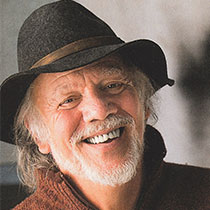Asheville's Historic Architecture (NC) [Paperback]
by Richard Hansley
Asheville, known for its architectural diversity and intriguing Art Deco style, has been fortunate in attracting brilliant architects who, with imaginative foresight and design expertise, have created lasting testaments in brick and stone. Local architectural enthusiast Richard Hansley recounts the history behind dozens of Asheville's most prominent buildings and historical neighborhoods in Asheville's Historic Architecture. Discover how Douglas Ellington, Richard Sharp Smith, James Vester Miller and Tony Lord influenced this busy metropolis, as landmarks like the Jackson Building, the Grove Park Inn and the Art Deco City Building were constructed along the city's thriving streets. These buildings have stood the test of time and remain as breathtaking in concept and appearance today as when first completed.
BUILT FOR THE AGES: A History of the Grove Park Inn
by Bruce E. Johnson
Cherokee History and Culture
by Helen Dwyer
An introduction to the locale, history, way of life, and culture of the Cherokee Indians.
Lady on the Hill: How Biltmore Estate Became an American Icon
by Howard E. Covington Jr. and The Biltmore Company
"What William Cecil has accomplished at Biltmore Estate is one of the great preservation success stories of all time. He has set a high standard for what all historic house museums strive for: magnificently preserved buildings and grounds, engaging interpretation, and--perhaps most challenging of all--economic self-sufficiency. It is no surprise that Biltmore Estate is widely recognized as one of America's finest places to visit."
--Richard Moe, President of the National Trust for Historic Preservation
"Biltmore is a glorious national historic landmark that, through creative vision and entrepreneurial management, preserves and provides insight into a way of life in the early 1900s. Bill is the imaginative and multifaceted leader who has built this great monument to enrich his community. George and I admire his dedication and success."
--George and Abby Rockefeller O'Neill
"Bill Cecil and his team at Biltmore Estate have sure proved that they know how to build a successful business. They did it the old-fashioned way: embrace a bold idea that others said could not be done and--through commitment, determination, and hard work--bring it to life. Their achievement against the odds is inspiring, and their vision and perseverance are valuable lessons to us all."
--Don Logan, Chairman, Media & Communications Group, Time Warner
"If George Vanderbilt did nothing more than engage the two most prominent and storied designers of their time, architect Richard Morris Hunt and landscape architect Frederick Law Olmsted, to carry out his vision of a European estate in the southern Appalachians, he would have created an American icon. The beauty of the method by which the estate was executed and, even today, the meticulous attention to detail, in the presentation and care of the estate by William Cecil, have brought history to life."
--Gary J. Walters, Chief Usher, The White House
Legendary Locals of Asheville
by Kevan D. Frazier
Like all great cities, Ashevilles story is one of people, not institutions or industries. For more than two centuries, deep in the Appalachian Mountains of North Carolina, extraordinary women and men have created a truly unique American city. Legendary Locals of Asheville tells the stories of the people who founded, built, and rebuilt Asheville. From the first woman elected to state office in the South, who won her primary before women had the right to vote, to the grandson of a famed railroad magnate who built a 250-room chateau that became the largest home in America, to the entrepreneur who helped ignite the citys renaissance when he risked opening an art gallery downtown when most of it was still boarded up, Ashevillians are an amazing lot. Likewise, there are stories of extraordinary groups like the renowned faculty of an experimental college that redefined the American arts or the brave high school students who joined together to fight segregation. Their stories are as touching and fascinating as they are varied.
Look Homeward, Angel
by Thomas Wolfe
A legendary author on par with William Faulkner and Flannery O’Connor, Thomas Wolfe published Look Homeward, Angel, his first novel, about a young man’s burning desire to leave his small town and tumultuous family in search of a better life, in 1929. It gave the world proof of his genius and launched a powerful legacy.
The novel follows the trajectory of Eugene Gant, a brilliant and restless young man whose wanderlust and passion shape his adolescent years in rural North Carolina. Wolfe said that Look Homeward, Angel is “a book made out of my life,” and his largely autobiographical story about the quest for a greater intellectual life has resonated with and influenced generations of readers, including some of today’s most important novelists. Rich with lyrical prose and vivid characterizations, this twentieth-century American classic will capture the hearts and imaginations of every reader.
Of Time And The River
by Thomas Wolfe
he sequel to Thomas Wolfe's remarkable first novel, Look Homeward, Angel, Of Time and the River is one of the great classics of American literature. The book chronicles the maturing of Wolfe's autobiographical character, Eugene Gant, in his desperate search for fulfillment, making his way from small-town North Carolina to the wider world of Harvard University, New York City, and Europe. In a massive, ambitious, and boldly passionate novel, Wolfe examines the passing of time and the nature of the creative process, as Gant slowly but ecstatically embraces the urban life, recognizing it as a necessary ordeal for the birth of his creative genius as a writer.
The Last Castle
by Denise Kiernan
A New York Times bestseller with an "engaging narrative and array of detail” (The Wall Street Journal), the “intimate and sweeping” (Raleigh News & Observer) untold, true story behind the Biltmore Estate—the largest, grandest private residence in North America, which has seen more than 120 years of history pass by its front door.
The story of Biltmore spans World Wars, the Jazz Age, the Depression, and generations of the famous Vanderbilt family, and features a captivating cast of real-life characters including F. Scott Fitzgerald, Thomas Wolfe, Teddy Roosevelt, John Singer Sargent, James Whistler, Henry James, and Edith Wharton.
Orphaned at a young age, Edith Stuyvesant Dresser claimed lineage from one of New York’s best known families. She grew up in Newport and Paris, and her engagement and marriage to George Vanderbilt was one of the most watched events of Gilded Age society. But none of this prepared her to be mistress of Biltmore House.
Before their marriage, the wealthy and bookish Vanderbilt had dedicated his life to creating a spectacular European-style estate on 125,000 acres of North Carolina wilderness. He summoned the famous landscape architect Frederick Law Olmsted to tame the grounds, collaborated with celebrated architect Richard Morris Hunt to build a 175,000-square-foot chateau, filled it with priceless art and antiques, and erected a charming village beyond the gates. Newlywed Edith was now mistress of an estate nearly three times the size of Washington, DC and benefactress of the village and surrounding rural area. When fortunes shifted and changing times threatened her family, her home, and her community, it was up to Edith to save Biltmore—and secure the future of the region and her husband’s legacy.
This is the fascinating, “soaring and gorgeous” (Karen Abbott) story of how the largest house in America flourished, faltered, and ultimately endured to this day.
The Rise of Asheville: An Exceptional History of Community Building
by Marilyn Ball
As newcomers flocked to Asheville over the last fifty years, they joined with locals to breathe new energy into the city. Sometimes called the Asheville One Thousand, these folks didn't necessarily intend to be entrepreneurs, community organizers and business leaders, but when they saw a challenge, they rose to it. Stone Soup became a gathering place and laid the foundation for Asheville's natural food culture. MANNA Food Bank emerged to help solve hunger. And the River Arts District turned into a vibrant cultural center for upcoming artists. Join author Marilyn Ball as she traces the bonds of community that gave rise to Asheville today.











